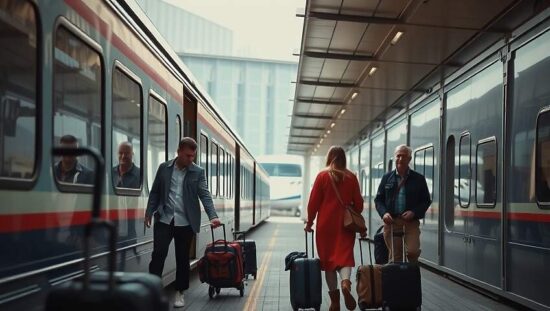The Lufthansa Group is signaling a deepened commitment to integrated rail and air travel, but the initiative is laced with political implications and reveals a complex balancing act between modernization and appeasing a diverse passenger base. Lufthansa Airlines CEO Jens Ritter recently outlined plans to further expand the airline’s cooperation with Deutsche Bahn, emphasizing a desire to make “rail-to-flight” connections more appealing to travelers.
Central to the envisioned expansion is a seamless baggage handling system, potentially allowing passengers to check luggage at major train stations like Hamburg or Cologne and retrieve it only at their final flight destination. This ambitious goal, currently under development, highlights the growing recognition within Lufthansa that appealing to environmentally conscious and convenience-seeking travelers demands a more holistic transport solution.
However, Ritter’s vision extends beyond mere convenience, injecting a clear political dimension. He publicly advocated for a significant strengthening of Germany’s rail network, specifically demanding an ICE (Intercity Express) railway connection to Munich Airport. This call underscores the broader debate surrounding infrastructure investment and the necessary modernization of Germany’s transport system, a topic frequently raised in national political discourse. The lack of robust rail links to key airports like Munich has long hindered integrated travel options and drawn criticism from mobility advocates.
Despite the forward-looking strategy, Lufthansa appears hesitant to fully embrace a digital-first approach. In a clear divergence from budget airline Ryanair, Ritter affirmed the continuation of paper boarding passes, citing a desire to cater to passengers who prefer not to rely on smartphones. This seemingly minor detail speaks to a broader concern about alienating a segment of the customer base, particularly older demographics and reflects a more conservative approach to technological adoption within the airline.
The continued operation of regional flights, like the Frankfurt-Westerland route, despite significantly longer travel times via rail, further highlights this strategic duality. While Lufthansa champions sustainability, maintaining such routes, primarily serving tourism, raises questions about the airline’s commitment to genuinely reducing its carbon footprint, potentially sacrificing environmental concerns for maintaining regional connectivity and catering to niche markets. The push for integrated rail-air travel presents a complex equation for Lufthansa, requiring them to reconcile innovation and convenience with legacy practices and political pressures.





